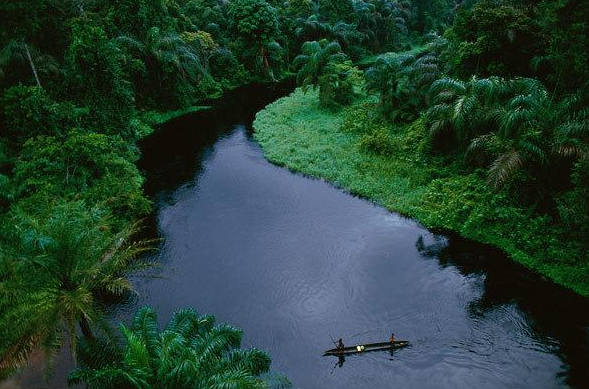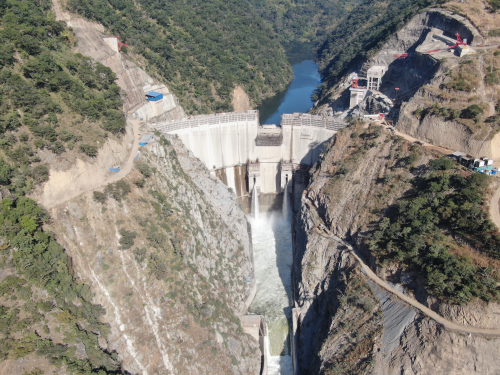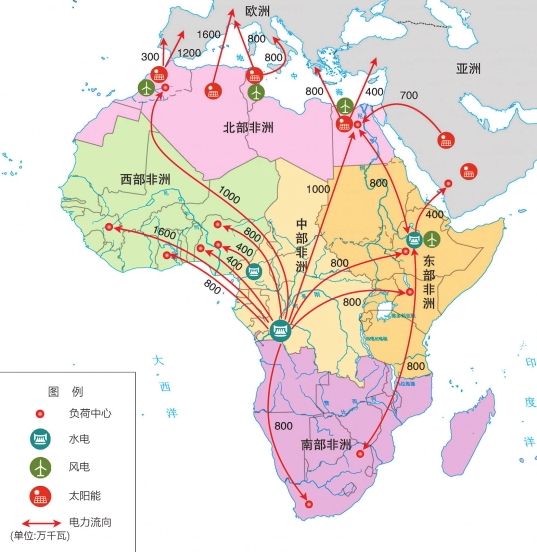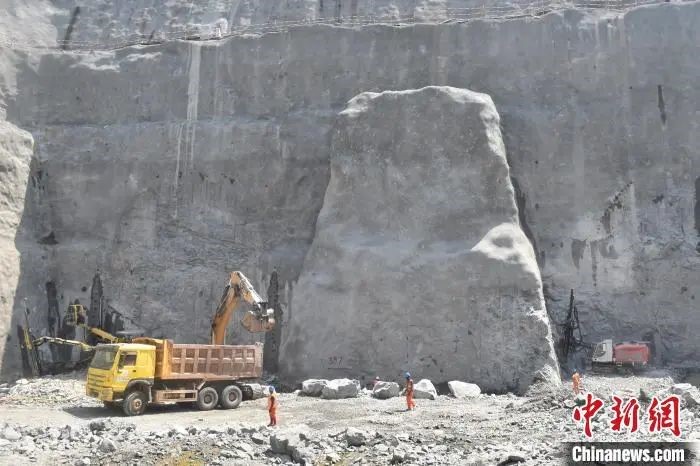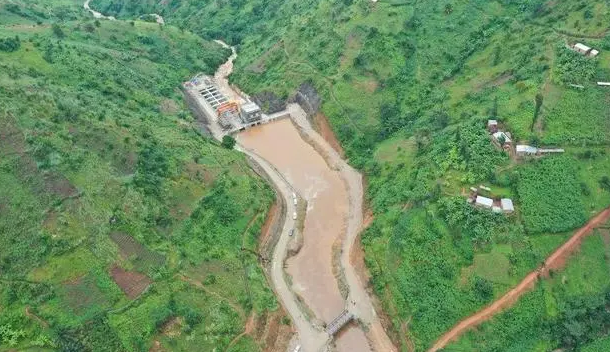| Process of Lightening Africa Makes It Brighter and China-Africa Cooperation Closer |
|
|
| 2023-02-25 06:34 |
|
From some perspectives, Africa is full of electricity. Water gathers at mountains in the plateau of southern region of Africa. It is known as the Congo River after running through Boyoma Falls and continues its journey northwest and then southwest. Later, the river crosses the largest city in Central Africa—Kinshasa. The terrain dramatically falls after it leaves the city. After running through canyons, rapids, and steep slopes, the river rushed to the edge of the terrain, soaring into the air and then falling suddenly. With over 30 times such movements, a drop of 280 meters in total, large potential energy, and kinetic energy are formed in the section which stretches out for more than 400 kilometers from Kinshasa to the estuary of the Congo River. The Global Energy Interconnection Development and Cooperation Organization estimated that the total hydropower installed capacity developing just in this section can reach 110 million kW, which is equivalent to five Three Gorges Dams in operation and the power generated by seven Three Gorges Dams.
Congo River Underutilized water resources in Africa has great potential to make profits According to a recent report from China Science Daily, Zeng Zhenzhong, an associate professor at the School of Environment Science and Engineering (School of Environment) at Southern University of Science and Technology (SUSTech) and his collaborators discovered that Africa and Asia own 85% of water resources worldwide which have not been used and can also make profits. The research finding may help countries owning these water resources formulate development strategies that can balance environmental protection and social impacts.
Busanga Hydropower Plant constructed by Chinese enterprises in DR Congo. The report shows that the research was based on the analysis of the unused water resources of 2.89 million rivers around the globe. Zeng and his collaborators analyzed data on water flow and reservoirs and considered variations in demography and environment, and factors such as costs to determine which places can be used for new hydropower plants. Their analysis excludes sites inappropriate to hydropower plants, including regions for heritage items or biodiversity, and areas with frequent earthquakes and a dense population. They also consider the way to maintain the ecological integrity of the lower reaches of the river. Their research also shows that the underutilized water resources which are profitable in Africa are four times larger than those that have been explored. "Asia has the largest potential in unused water resources. Two thirds of the world's total amounts are in the region of the Himalayas. Africa ranks second," said Xeng Zhenzhong, the corresponding author of the thesis. If the profitable and unused water resources in most African countries can be explored and used properly, these countries can have their current electricity demands met. By 2030, the energy interconnection will take shape in Africa. Power development in Africa is related to systematic issues, which can be solved by systematic planning. In 2015, China proposed the Global Energy Interconnection Initiative. To cope with the situation that Africa was faced with extreme electricity shortages, the energy interconnection in this continent became the first regional plan to practice the initiative. In 2018, the African Energy Interconnection and Sustainable Development Alliance (AEISDA) was established during the Beijing Summit of the Forum on China-Africa Cooperation (FOCAC). By 2021, over 20 countries in Africa and more than 100 world-renowned enterprises have applied to join the AEISDA.
A schematic diagram showing the directions of electricity transmission across continents and regions in Africa by 2050. On March 16, 2022, the first generator set of the Gouina Hydropower Plant in Mali, after a trial operation of 72 hours, was put into official operation and started grid-connected power generation. The Gouina Hydropower Plant in West Africa is a landmark project contracted by Chinese enterprises in the Belt and Road countries. After completion, the power generated by the plant can benefit three African countries. On June 9, 2022, the groundbreaking ceremony of the restoration project of the ninth generator set, which was a continued construction project of the third and the fourth generator sets of the Kainji Hydropower Plant took place. The project was carried out by PowerChina Huandong Engineering Corporation Limited (HDEC). As the largest hydropower project in Nigeria, the Kanji Hydropower Plant is in the Niger River basin and has a total installed capacity of 760 MW. On September 6, 2022, the completion ceremony of the Ruzibazi Hydropower Plant in Burundi took place. As the largest hydropower plant constructed with Chinese assistance, the Ruzibazi Hydropower Plant is expected to increase the country’s power supply by one third. During the Spring Festival of 2023, builders were busy at the construction site of the Caculo Cabaça Hydropower Plant in Angola, which is more than ten thousand miles away from China. After its completion, the Caculo Cabaça Hydropower Plant in Angola will have an annual power generation of 8.98 billion kWh, which can meet over 40% of the power supply demand in this country. The project is the largest hydropower plant in Africa and is also known as the "Three Gorges Dam in Africa".
Gouina Hydropower Plant in Mali, designed by PowerChina Northwest Engineering Corporation Limited (PowerChina Northwest), and constructed by Sinohydro Corporation Engineering Bureau 15 Co., Ltd. and Sinohydro Corporation Engineering Bureau 16 Co., Ltd.
Kainji Hydropower Plant.
Ruzibazi Hydropower Plant.
The photo shows the construction site of a tailrace tunnel of the Caculo Cabaça Hydropower Plant in Angola. Photo by China Gezhouba Group Co., Ltd. of Energy China According to the development planning, the energy interconnection in Africa will take shape by 2030. By 2040, the main energy interconnection system consisting of one horizontal and two vertical power transmission lines will be formed in Africa. By 2050, the main energy interconnection system consisting of two horizontal and two vertical power transmission lines will be formed in Africa. A strong energy interconnection will take shape basically. This article collects information from media reports and is only for readers to learn about related updates on the topic. If there is any infringement, please contact us for the removal of the article.
END Source: Collected News on China-Africa Economic and Trade Expo (CAETE) Further Reviewed by: Zhao Yuhui and Jiang Yongfeng Reviewed by: Ding Xun Edited by: Zhu Tingjie |
| ||||||||||
|
||||||||||
|
|
